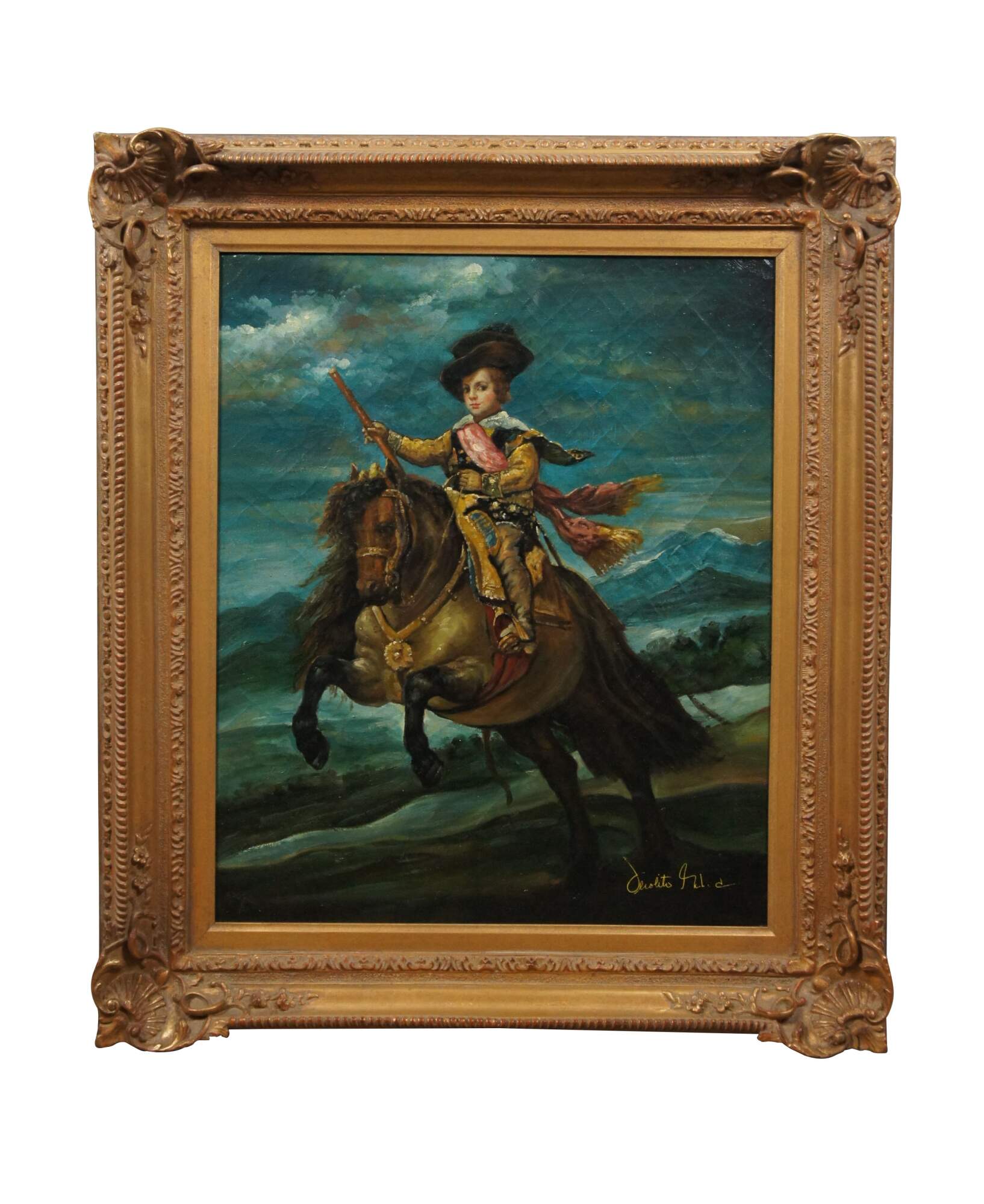
Shipping:
Free Shipping Included
Delivery:
Estimated 2-15 Business Days
Payments:
Credit Card, Check, Cash, PayPal, Apple Pay, Venmo
Returns:
30 Days 100% Money Back Guarantee, Buyer Pays Return Shipping
Description
Late 20th century oil painting on linen after the "Equestrian Portrait of Prince Balthasar Charles" or "Infante Baltasar Carlos on Horseback" by Diego Valazquez. Depicts the young Prince of Asturias, Balthasar Charles seated on a round, leaping horse or pony. Molded frame with scalloped corners and betailed bevels with a gold finish.
"The Equestrian Portrait of Prince Balthasar Charles is a portrait of Balthasar Charles, Prince of Asturias on horseback, painted in 1634–35 by Diego Velázquez. It is now in the Prado. Velázquez was commissioned to paint a series of equestrian portraits for the Hall of Realms, originally a wing of the Buen Retiro Palace in Madrid. This work was meant to fill the gap between two larger equestrian portraits of the prince's parents, Philip IV and Elisabeth of France. Art historian Andrew Graham Dixon describes the subject as a "little boy on this plump horse, underneath a lowering sky full of dark clouds. The child looks lost." According to Simona Di Nepi, the young prince's calm demeanor while seated on a rearing horse has a political significance, representing him as a confident horseman and a strong leader. His authority is symbolized by the baton he holds, the sword he wears, and the military sash on his chest. The peculiar thickness of the horse's abdomen may have been calculated by Velázquez to appear normal when the portrait was viewed from below, according to E. Lafuente Ferrari."
"Diego Rodríguez de Silva y Velázquez, (baptized 6 June 1599 – 6 August 1660) was a Spanish painter, the leading artist in the court of King Philip IV of Spain and Portugal, and of the Spanish Golden Age. He was an individualistic artist of the Baroque period (c. 1600–1750). He began to paint in a precise tenebrist style, later developing a freer manner characterized by bold brushwork. In addition to numerous renditions of scenes of historical and cultural significance, he painted scores of portraits of the Spanish royal family and commoners, culminating in his masterpiece Las Meninas (1656). Velázquez's paintings became a model for 19th century realist and impressionist painters. In the 20th century, artists such as Pablo Picasso, Salvador Dalí, and Francis Bacon paid tribute to Velázquez by re-interpreting some of his most iconic images. Most of his work entered the Spanish royal collection, and by far the best collection is in the Museo del Prado in Madrid, although some portraits were sent abroad as diplomatic gifts, especially to the Austrian Habsburgs." (Source: Wikipedia)
Condition
Good Overall - Crazing to surface; gentle wear
Dimensions
27.5" x 3.25" x 31" / Sans Frame - 19.25" x 23.25" (Width x Depth x Height)